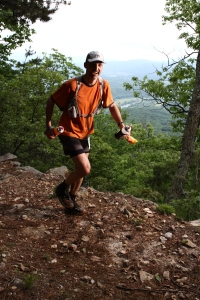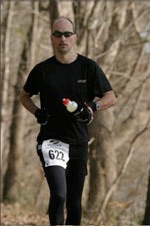
Dr. Kanold is a neuroscientist and engineer (neuroengineer!) studying the auditory cortex. He is interested in how the brain computes information about the world and how this representation is shaped by experience. He has discovered the key role of a special population of neurons in the developing brain, the subplate neurons. The Kanold lab was one of the first to use optical approaches to discover that “maps” of frequency preference in auditory cortex were disordered on a local scale challenging prior textbook dogma. The Kanold lab was also the first to optically dissect auditory cortical circuits across the lifespan and to show that experience even before ear opening and activation of layer 4 in rodents can shape subplate neuron circuits. His lab combines and further develops in vivo and in vitro optical and electrophysiological methods, high throughput behavioral approaches, and computational analyses to study the circuits and mechanisms underlying auditory perception and plasticity (Kavli profile here).
Dr. Kanold has been on the faculty of the Telluride Workshop for Neuromorphic Cognition, the Neurobiology Course at the Marine Biology Lab in Woods Hole, the Oxford Autumn School in Neuroscience. His work has been funded by multiple grants from NIH, AFOSR, etc. and he has been serving on many study sections. Dr. Kanold enjoys working with a diverse group of humans and Dr. Kanold’s trainees have won Ruth L. Kirschstein National Research Service Awards from NIH, Wellcome Alliance Fellowship, Hearing Research Foundation Award, CDRMP grant, and NIH R21 as well as multiple research awards.
Training
Dr. Kanold studied Electrical Engineering at TU-Berlin focussing on microelectronics and VLSI chip design. He became interested in neuroscience while working on VLSI chipsets for an HDTV decoder. He pursued his Ph.D. in Biomedical Engineering at Johns Hopkins University working with Drs. Eric Young and Paul Manis. He studied multi-sensory integration and discovered that dorsal cochlear nucleus (DCN) cells receive inputs from pinna muscle receptors and how biophysical specializations enable DCN cells to represent both ear position and sound information. Intrigued by the intricacy of neuronal circuits and the ability of the brain to wire up itself using internally generated “spontaneous” activity , after his Ph.D., Dr. Kanold joined the laboratory of Dr. Carla Shatz at Harvard to immerse himself in neural circuit development. He discovered that subplate neurons, a largely transient cell population, are required for the functional maturation of visual responses and thalamocortical synapses in the visual cortex, as well as normal ocular dominance plasticity.
Positions
Professor, Biomedical Engineering, Johns Hopkins University, Baltimore, 2020-; BME Phd Program Co-Director 2021-
Professor, Biology, UMd, College Park, 2016-2020
Associate Professor, Biology, UMd, College Park, 2012-2016
Associate Professor (secondary), Anatomy & Neurobiology, U. Maryland School of Medicine, 2015-
Assistant Professor, Biology, UMd, College Park, 2007-2012
Instructor, Neurobiology, Harvard Medical School, 2005-2006
Post-Doctoral, Neurobiology, Harvard Medical School, 2000-2005
Mentor: Carla Shatz
Ph.D., Biomedical Engineering, The Johns Hopkins University, 2000
Mentors: Eric Young, Paul Manis
Dipl.Ing. (MSE), Electrical Engineering, Technische Universität Berlin, Germany, 1994
Other:
Assistant Professor, Kathmandu University Medical School (KUMS, ANMF), Nepal 2003
VLSI Institute/Dept. of EE, Shanghai Jiao Tong University, PR China, 1991-1992
Honors:
St. Catherines College, Oxford University, UK, Visiting Fellowship, 2013
Burt Evans Award, NOHR 2013
Alfred P.Sloan Foundation Research Fellowship 2010
Ralph E. Powe Junior Faculty Enhancement Award 2007
Suma Cum Laude (distinction/”Auszeichnung”) TU-Berlin 1994
Information
My Neurotree Family Tree
Google scholar cites
My Erdos number is 4
Other
I am a runner since high school. I have gone from road races to trail ultramarathons. I also like to travel on motorcycles.
My Marathon Maniacs score card, DUV Ultramarathon statistics , Ultrasignup
Research by my great-great..great grandfather
- MMT 100 2011 after ~20h
- MMT 100 2011
- MMT 100 has rocks
- Berlin 100 mile run, 2011, 4th place
- MMT100 2019 Camp Rosevelt, mile 63 (yes I tend to race in the same shirt)
- MMT 100 2019 finish. 7th MMT finish. Age group win 🙂
- Stonemill 50 mile. Age group win and RRCA Regional Champion award
- Hong Kong 100. Top of Tai Mo Shan @~midnight
- JFK50
- Everest & Lhotse
- Kilimanjaro
- riding motorcycle on Dalton Highway to Prudhoe Bay












